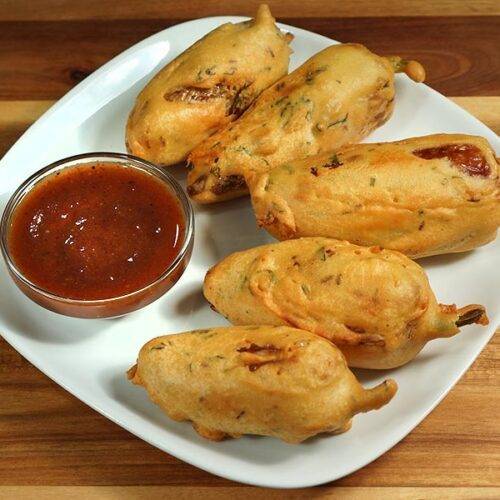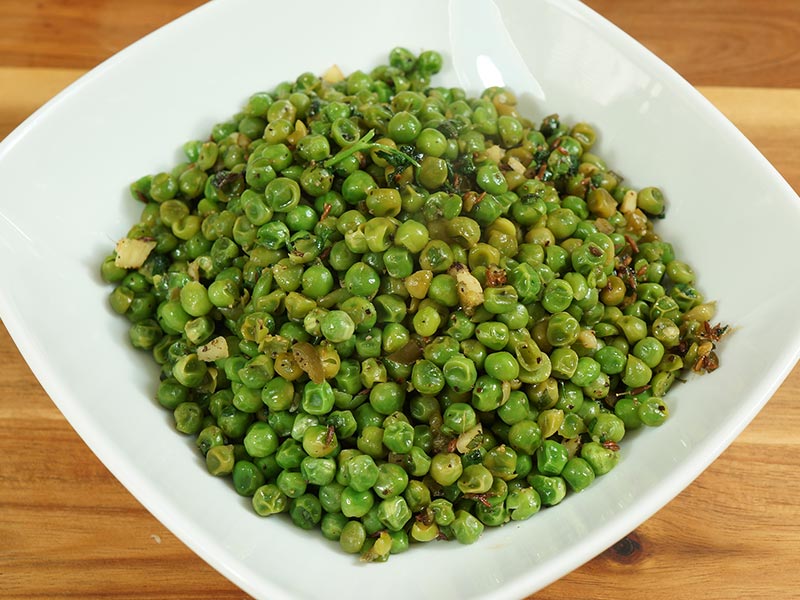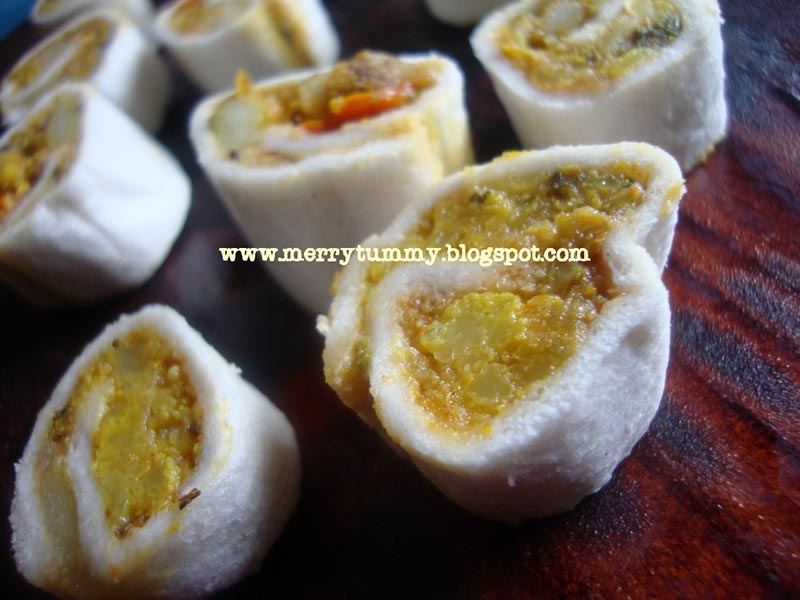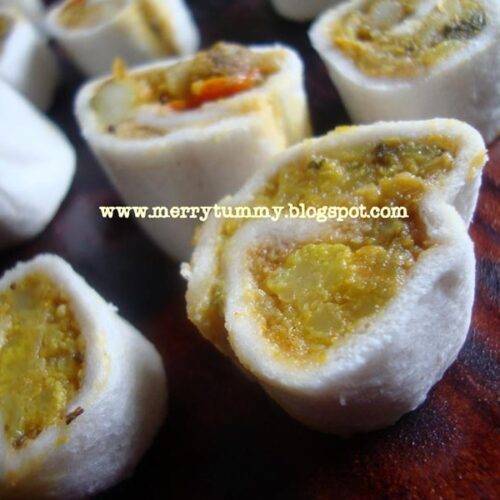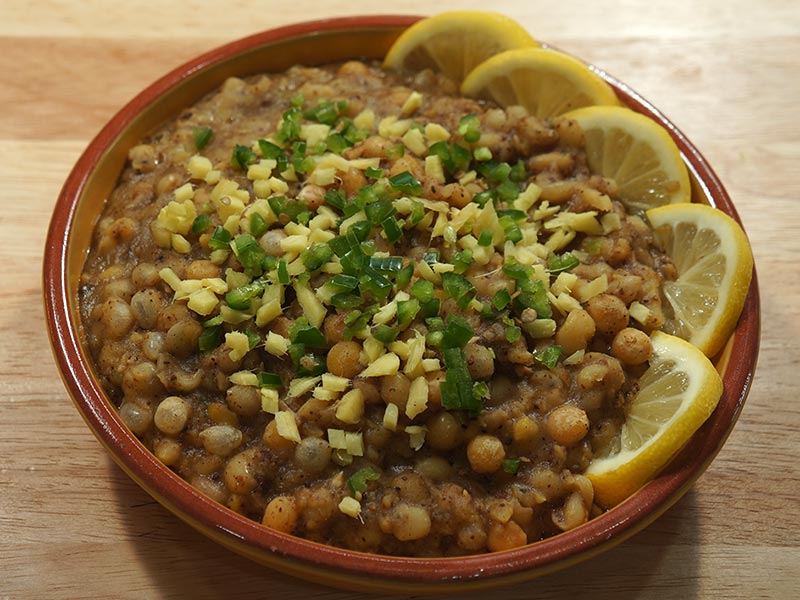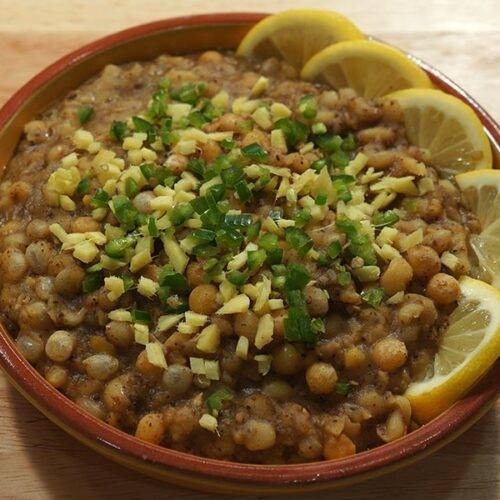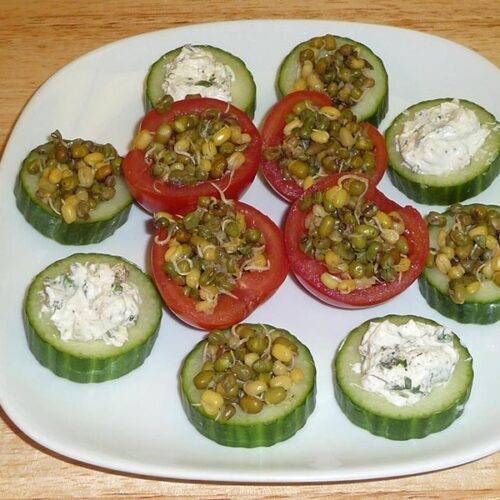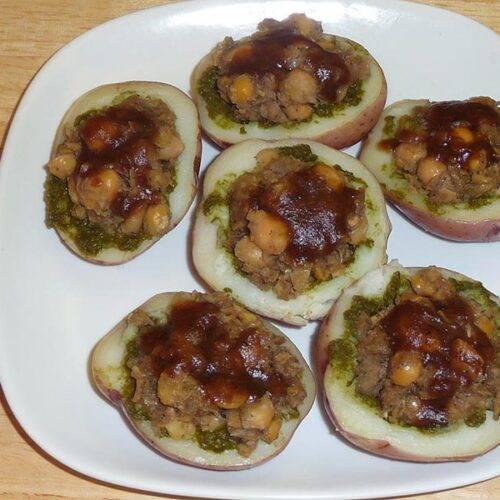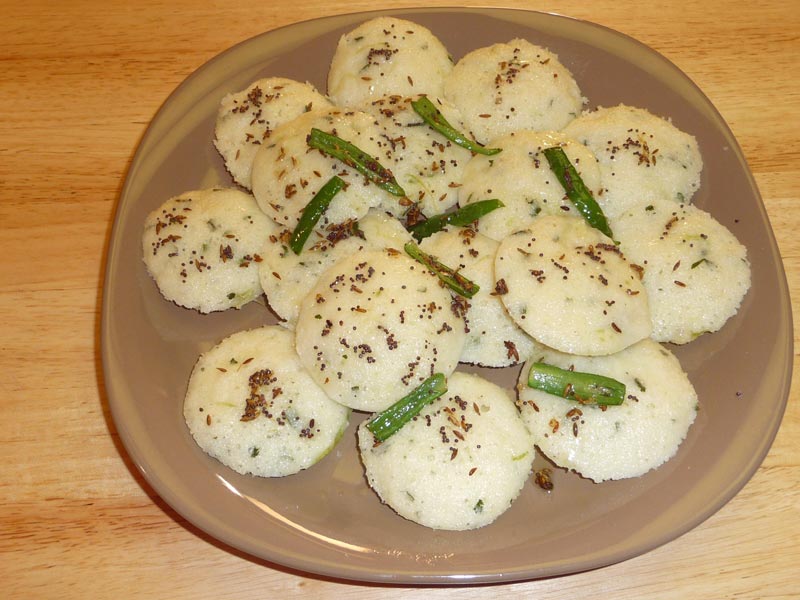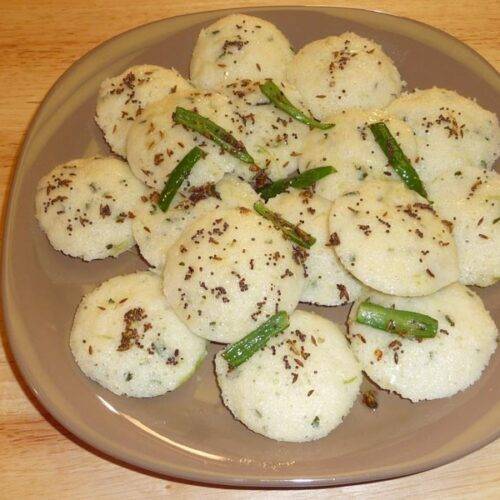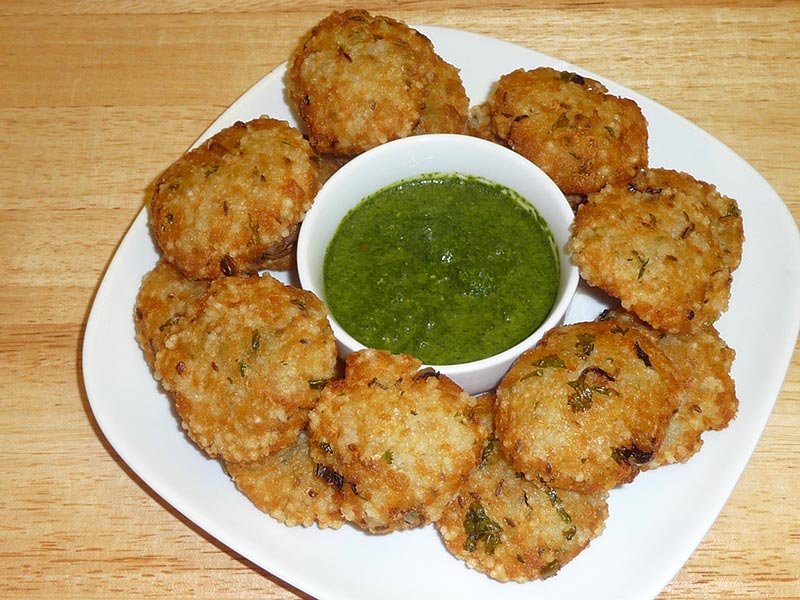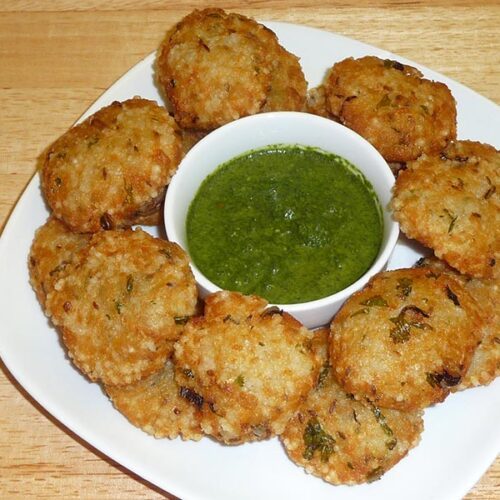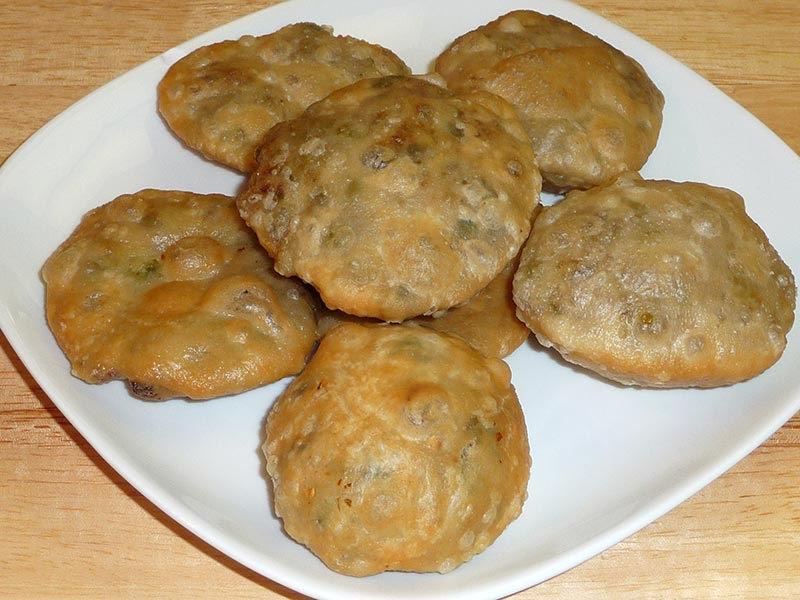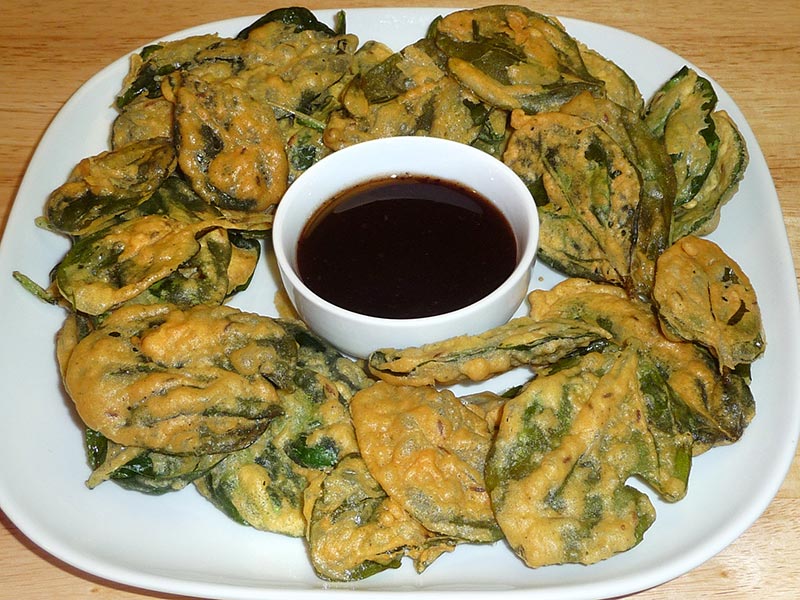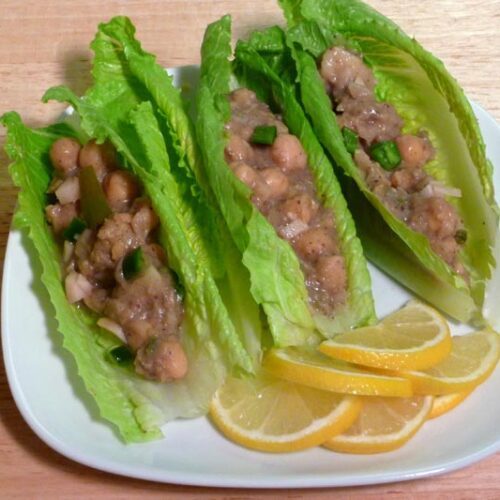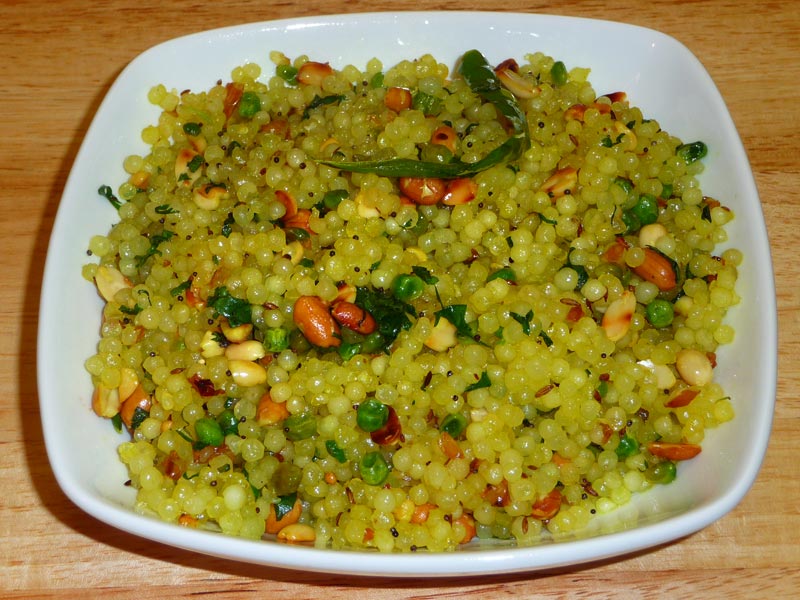Mirchi Vada (Chili Fritter)
Ingredients
Ingredients:
- 8 green chilies (I use yellow chili peppers)
For Filling
- 1 cup potatoes boiled peeled and mashed
- 1/2 teaspoon salt
- 1/4 teaspoon cumin seeds (jeera)
- 1 teaspoon coriander powder (dhania)
- 1/4 teaspoon mango powder (amchur)
- 1 tablespoon chopped cilantro (hara dhania)
- 1/4 teaspoon chilli powder (lal mirch), (optional)
For Batter
- 1/2 cup Besan (gram flour), (available in Indian grocery stores)
- 1/4 teaspoon salt
- 1/4 teaspoon cumin seeds (jeera)
- 1/8 tablespoon baking powder
- 1 tablespoon cilantro chopped (hara dhania)
- Approx. ¼ cup water
Also, need oil to deep-fry
Instructions
- Vertically slit the chili and remove the seeds,.but not the stems. Set aside.
- Mix all the filling ingredients and set aside.
- To make the vada batter, mix all the dry ingredients: Besan, cumin seeds, baking powder and salt. Add the water slowly to make a thick smooth batter, the consistency of pancake batter.
- Add cilantro and mix it well.
- Stuff the chilies with potato mix.
- Heat one inch of oil in a frying pan over medium heat. To test, put one drop of batter in the oil. The batter should form a small ball on the surface of the pan, but not change color right away.
- Dip the filled chilies in the batter one at a time, making sure each is covered with batter all around. Drop slowly into the frying pan.
- Fry the mirchi vada until all sides are golden brown, four to five minutes, turning occasionally. Take them out and place them on a paper towel.
Notes
- You can prepare the Mirchi Vadas in advance, and heat them in a 300°F oven before serving.
- The leftover makes great sandwiches.
Mirchi Vada Recipe: A Spicy Delight
Mirchi Vada is a spicy and flavorful Indian street food snack made by stuffing green chilies with a tangy potato filling, coating them in a gluten-free batter, and deep frying until crispy, making it a delectable vegan appetizer or snack option.
Introduction to Mirchi Vada
Mirchi vada, also known as chili fritters, is a popular Indian snack that features green chilies stuffed with a spicy potato filling, dipped in a gram flour batter, and deep-fried to golden perfection. This crispy and flavorful snack is a favorite across India and is often enjoyed with a variety of chutneys or sauces. Mirchi vada is a delightful treat for spice lovers and is perfect for snacking or serving as an appetizer at parties.
How to Make Mirchi Vada: Step-by-Step Guide
Preparing the Ingredients
Before starting the preparation, gather all the necessary ingredients. You will need fresh green chilies, potatoes, gram flour (besan), spices such as cumin seeds, turmeric powder, and salt, as well as oil for deep frying. Ensure that the potatoes are boiled and peeled beforehand.
Preparing the Filling
Begin by preparing the spicy potato filling. Mash the boiled potatoes in a bowl and add the desired spices such as cumin seeds, turmeric powder, and salt to taste. Mix well until all the spices are evenly incorporated into the mashed potatoes.
Stuffing the Chilies
Next, carefully slit each green chili lengthwise and remove the seeds if you prefer a milder flavor. Stuff the prepared potato filling into the chilies, ensuring they are evenly filled. Be cautious while handling the chilies to avoid any skin irritation.
Preparing the Batter
In a separate bowl, prepare the gram flour batter by combining gram flour, a pinch of turmeric powder, salt, and water. Mix until you achieve a smooth and thick consistency batter that coats the back of a spoon.
Dipping and Frying
Now, heat oil in a deep frying pan or kadhai over medium heat. Once the oil is hot, dip each stuffed chili into the gram flour batter, ensuring it is well coated. Gently place the coated chilies into the hot oil and fry until they turn golden brown and crispy. Use a slotted spoon to remove the fried mirchi vadas from the oil and drain them on a paper towel to remove excess oil.
Chilli Fritters Recipe: Tips and Tricks
- Ensure that the green chilies are fresh and firm for the best results.
- Adjust the spiciness of the filling according to your preference by adding more or fewer spices.
- To reduce the spiciness of the chilies, you can soak them in salted water for a few minutes before stuffing.
- Make sure the oil is hot enough before frying to prevent the mirchi vadas from absorbing excess oil.
Variations of Green Chilli Fritters
- For a cheesy twist, add grated cheese to the potato filling before stuffing the chilies.
- You can also add finely chopped cilantro, or mint leaves to the potato filling for added flavor and freshness.
- Experiment with different spices and herbs to customize the filling according to your taste preferences.
Benefits of Mirchi Vada
Mirchi vada is not only delicious but also offers several health benefits. Green chilies are rich in vitamins A and C, as well as antioxidants, which help boost immunity and promote overall health. Additionally, potatoes provide a good source of carbohydrates and energy, making mirchi vada a satisfying snack option.
FAQs about Mirchi Vada
Q: Can I make mirchi vada ahead of time and reheat them later?
A: While mirchi vadas are best enjoyed fresh and hot, you can prepare them ahead of time and reheat them in a preheated oven or an air fryer to maintain their crispiness.
Q: Can I freeze leftover mirchi vadas?
A: Yes, you can freeze leftover mirchi vadas in an airtight container for up to a month. To reheat, simply thaw them in the refrigerator overnight and then heat them in an oven until they are warm and crispy.
Q: Is mirchi vada a gluten-free snack?
A: Yes, mirchi vada can be made gluten-free by using chickpea flour (besan) instead of wheat flour for the batter.
Explore More Recipes from Manjula’s Kitchen
If you enjoyed making mirchi vada, you might also like to explore other recipes from Manjula’s Kitchen. Here are some popular options to try: Palak (Spinach) Paneer, Aloo Gobi (Potato and Cauliflower), Vegetable Pakoras, Kaju Katli (Cashew Burfi), Baingan Bharta (Roasted Eggplant).
In conclusion, mirchi vada or green chili fritters are a delightful snack that combines the heat of green chilies with the comforting flavors of spiced potatoes.
By following this step-by-step recipe and incorporating some helpful tips and variations, you can easily recreate this popular Indian snack at home. So, gather your ingredients and get ready to indulge in the crispy goodness of mirchi vada!


